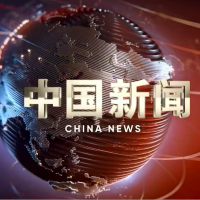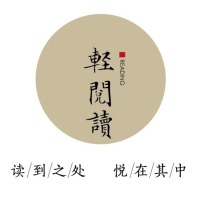QUAD Escalates Insecurity in the South China Sea
It comes as no surprise that at the last Quad summit convened by U.S. President Joe Biden, the South China Sea was once again a key topic of discussion.
In the leaders’ statement released on September 21 local time, concerns were raised about the so-called militarization of disputed features and coercive and intimidating maneuvers in the South China Sea. It condemned the alleged dangerous use of coast guard and maritime militia vessels, including increasing use of dangerous maneuvers.
However, if we objectively analyze the recent developments in the South China Sea, it is clear that the actions of the Philippines fit the above description: violating a bilateral gentlemen’s agreement by forcibly delivering supplies to the grounded warship at the Ren’ai Jiao, attempting to transport construction materials to reinforce the stranded vessel; sending the largest coast guard vessel, aided by Japan, to try and beach at Xianbin Jiao, lingering for nearly five months before being forced to retreat, during which time it even collided with a Chinese coast guard vessel; and allowing the U.S. to deploy a medium-range missile system on Luzon under the guise of military exercises, publicly stating that the goal was to “keep China awake at night.”

(President Joe Biden meets with from left, Australia's Prime Minister Anthony Albanese, India's Prime Minister Narendra Modi, Secretary of State Antony Blinken and Japan's Prime Minister Fumio Kishida, at the Quad leaders summit at Archmere Academy in Claymont, Del., Sept. 21, 2024. /CFP)
Nevertheless, the U.S. is actually referring to China. Although the public statement does not explicitly name China, cameras captured U.S. Secretary of State Antony Blinken announcing the first topic of discussion: China. Additionally, in a hot-mic comment, Biden was heard saying that “aggressive China” was “testing us.” Not to mention, anyone familiar with the Quad and U.S.-Philippine relations knows that this mechanism is designed with China in mind, and U.S. support and “guidance” for Marcos Jr. is key to the current tensions in the South China Sea. During Duterte’s term, China and the Philippines maintained good communication on the South China Sea issue. However, soon after Marcos Jr. took office, tensions in the South China Sea escalated quickly. It is obvious who the key driver behind this shift is, without needing any in-depth analysis.
The reason why the Philippines dares to act this way is precisely due to the support it receives from the U.S. and its allies through various confrontational mini-lateral mechanisms, including the Quad. U.S. backing is well-established, and Japan has signed a Reciprocal Access Agreement with the Philippines, similar to the U.S.-Philippines Visiting Forces Agreement. Japan has also provided substantial assistance to the Philippines in the form of ships, radar systems, helicopters, and other maritime law enforcement capabilities specifically aimed at the South China Sea situation. Australia plays a key role in U.S.-led regional military exercises, and Indian Minister of External Affairs Subrahmanyam Jaishankar visited the Philippines earlier this year, emphasizing the importance of “maritime defense cooperation.”
Clearly, when it comes to China, U.S. foreign policy and rhetoric focus solely on its stance without regard to right or wrong. The Biden administration has consistently used mini-lateral mechanisms like the Quad, AUKUS (Australia-UK-U.S. partnership), U.S.-Japan-South Korea, and U.S.-Japan-Philippines arrangements as evidence of its commitment to alliances and multilateral cooperation. Some followers and uninformed observers have labeled these mechanisms as new multilateralism. However, true multilateralism emphasizes openness and inclusivity, and security-related multilateralism should not target any specific country. The Quad and similar mechanisms are entirely designed to serve the U.S. in containing China and have become significant drivers of instability in the South China Sea, completely at odds with the essence and spirit of multilateralism.
Rather than reassessing its approach, the U.S. is doubling down. In the Quad summit statement, the leaders of the U.S., Japan, India, and Australia expressed their intention to strengthen cooperation in maritime security, enhance the interoperability of their maritime law enforcement agencies, provide maritime surveillance technology to other “Indo-Pacific” nations, and announced that the Quad will conduct joint coast guard patrols next year. Translated into plain terms, this means they will continue to support the Philippines’ provocations. Recently, after failing to ground its coast guard vessel at the Xianbin Jiao, the Philippines has been somewhat disheartened in its provocations in the South China Sea. At this critical moment, the Quad’s statements essentially serve to boost the Philippines’ morale.
However, the effect of this boost may be limited. The U.S.’s approach is well known: rallying some allies to provide the Philippines with financial support and promises, while conducting joint military exercises and patrols to create an impression of strength. But when it comes to key moments, the U.S. is reluctant to get directly involved. It’s not that the U.S. is backing down; rather, this is the outcome it desires: allowing the Philippines to be repeatedly embarrassed by China, while stirring up international rhetoric about Chinese “bullying” and granting geopolitical frameworks like the Quad more “international legitimacy.” Surely, as a seasoned player in geopolitical games, the U.S. knows very well that now is not the time to confront China, especially with the unresolved conflicts in Ukraine and the Middle East. It will not risk a conflict with China over the South China Sea, an issue that does not concern its core interests.
While the U.S. plays its geopolitical chess carefully, the true victims are the countries surrounding the South China Sea. Stability in the region, including the South China Sea and the entirety of East Asia, is in the best interest of every country. The U.S. is far across the Pacific, and Biden’s term is winding down in a few months. Under these circumstances, the Philippines should seize the current trend of improving stability in the South China Sea, seriously reflect on its failed provocations, and sit down with China to discuss how to pragmatically manage the situation and develop bilateral relations, instead of being swayed by empty rhetoric from the Quad summit.
(Author: Li Kaisheng, Research Fellow and Vice President, Shanghai Institutes for International Studies)














